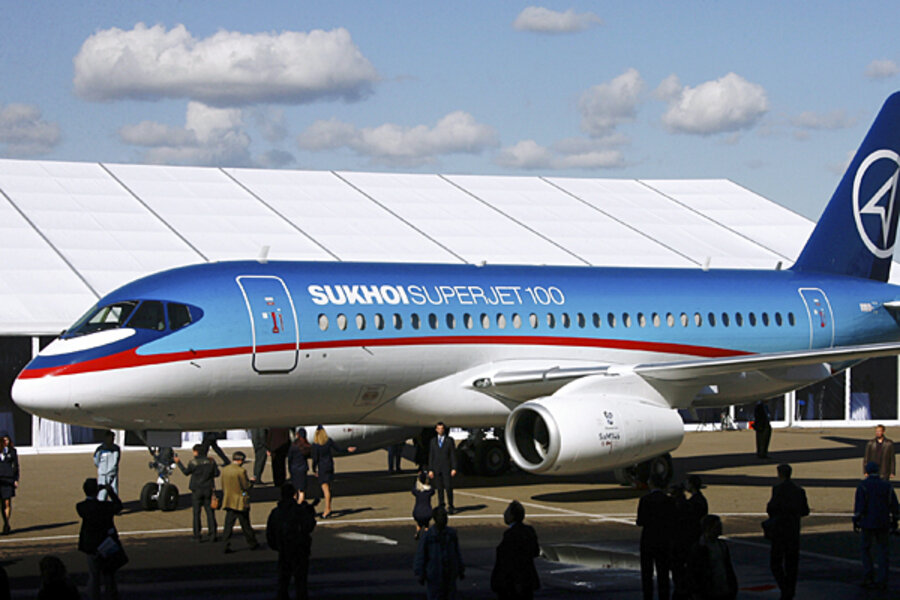Russian plane goes missing in Indonesia, dealing blow to aviation industry
Loading...
In what is likely to be a terrible blow for Russia's struggling aviation industry, a Sukhoi SuperJet-100, the first completely new post-Soviet jetliner, went missing during a promotional tour in Indonesia.
The plane is presumed crashed, although Russia's official RIA-Novosti agency said that darkness and fog have prevented search teams from reaching the site where the plane is believed to have gone down during a demonstration flight near Mt. Salak, about 50 miles from Jakarta.
The SuperJet, a half-dozen copies of which are already serving with two Russian airlines, is supposed to replace the fleets of aging Soviet-era Tupolev, Antonov, and Yakovlev mid-range aircraft that serve hundreds of far-flung regional routes across Russia and which have suffered a rash of catastrophic accidents in recent years. The situation became so bad last year that then-President Dmitry Medvedev ordered two regional workhorses, the Tupolev Tu-134 and the Antonov An-24, to be permanently grounded.
Great hopes have been invested in the SuperJet, which was developed by Russia's famous producer of fighter planes, Sukhoi, with input from several top Western aviation firms, including Boeing, Snecma, and Honeywell. The plane meets all the latest global aviation standards, and production models should be able to carry almost 100 passengers with an operating range of up to 2,500 miles, which makes it an ideal replacement for a wide range of troubled Soviet aircraft on Russia's multitude of outback routes.
There are also high hopes that the plane might do well on international markets, particularly in Asia, where its $35 million price tag makes it a tough competitor for similar-sized jets produced by the Canadian Bombardier Inc. and the Brazilian Embraer SA.
The SuperJet, which has sailed through testing and certification, has also been relatively accident-free in its development stages. The only serious mishap so far occurred in March, when a SuperJet operated by Aeroflot was forced to abandon a flight from Moscow to the Caspian city of Astrakhan due to problems with its undercarriage. Airline officials said passengers were never in danger.
But Russia's airline industry has been hit with a series of scandals, including revelations that many engineers working in aircraft factories have inadequate or fake diplomas.
Many Russians can recall, often with a shudder, how a catastrophic crash of the Soviet Union's "Concordski" Tu-144 supersonic jetliner at the Paris air show in 1973 destroyed the USSR's reputation as a worthy competitor of the West in aviation. All eyes will be on the investigation into today's SuperJet disappearance, and everyone will be hoping it does not reveal fundamental flaws in the plane's design.
Some reports said there were 44 people on board, others 50, including its eight-member Russian crew. Many of the passengers were aviation journalists and representatives of Asian airline companies that have been considering purchases of the new aircraft. The plane had previously visited Myanmar, Pakistan, and Kazakhstan. After Jakarta it was supposed to go to Laos and Vietnam.
Get daily or weekly updates from CSMonitor.com delivered to your inbox. Sign up today.








